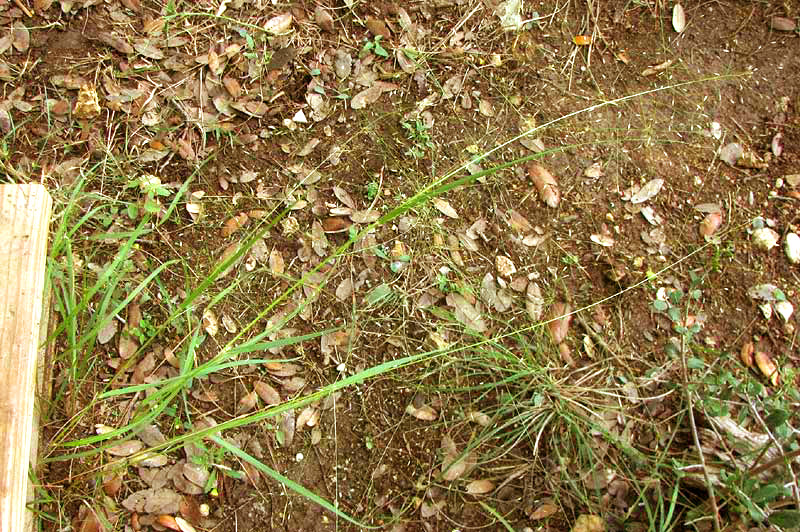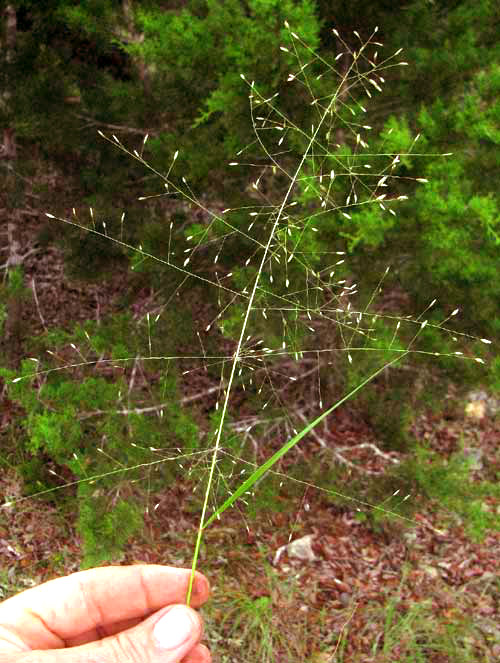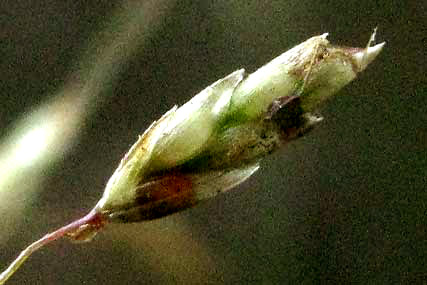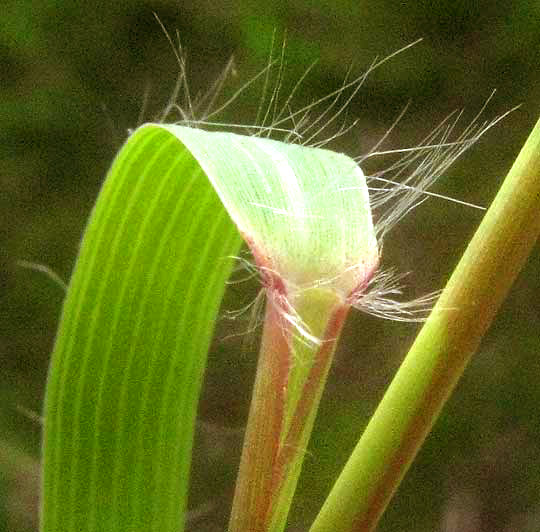Excerpts from Jim Conrad's
Naturalist Newsletter

from the October 20, 2013 Newsletter issued from the Frio Canyon Nature Education Center in the valley of the Dry Frio River in northern Uvalde County, southwestern Texas, on the southern border of the Edwards Plateau; elevation ~1750m (~5750 ft); N29.62°, W99.86°; USA
BIGTOP LOVEGRASS
Above, you may have to look hard to see tiny, diffusely dispersed spikelets in the inflorescence of the knee-high grass rooted at the very edge of Juniper House's back porch. A shot showing just the inflorescence, in which the spikelets are easier to see, is shown below:

Several grass species bear tiny, dispersed spikelets, so even with such good field marks, to identify this grass you need to look at the 4mm long (5/16ths inch) spikelets, shown below:

Important features to notice in that image are that the spikelet's lowest scales, the glumes, are not longer than the upper, scoop-shaped scales, which are the lemmas, and that there are only four florets present. In the inflorescence, many spikelets bear only two or three florets and are even shorter.
This grass's leaf-bases bear long, white hairs and a hairy ligule, as shown below:

When you see a grass with such a proportionally oversized, diffuse inflorescence with small spikelets containing more than one flower, probably the first genus to think of is Eragrostis. (If the spikelet has just one flower you might consider Agrostis.) Within the genus Eragrostis, our plant keys out pretty quickly because of its spikelets very small size and limited number of florets. Our grass, normally known as Bigtop Lovegrass, is ERAGROSTIS HIRSUTA, occurring in the southeastern US and deep into Mexico. It likes sandy floodplains best, but it's weedy enough to turn up along sandy roadsides and, as we see here, at our hillside doorstep.
Back on the farm in Kentucky we had this or a very similar species, which my father called Crawlgrass. That's because when he went into the fields the big inflorescences would easily detach from their parent bodies, accumulate on his feet like seaweed as one walks ashore, and somehow insinuate themselves inside his trouser legs and "crawl" up his leg as he walked.
You can understand why a grass would invest in forming such a large, airy inflorescence when you see late fall's winds blowing the broken-off inflorescences across the landscape as if they were tumbleweeds. The tumbling inflorescences disseminate tiny grains wherever the wind blows them, and a lot of heads end up collecting against fences, which may be OK, since the mower can't reach the resulting plants there.
Why Eragrostis species are called lovegrasses isn't known, but the connection between them and love is an old one.
Lovegrass grains are tiny but small birds relish eating them.